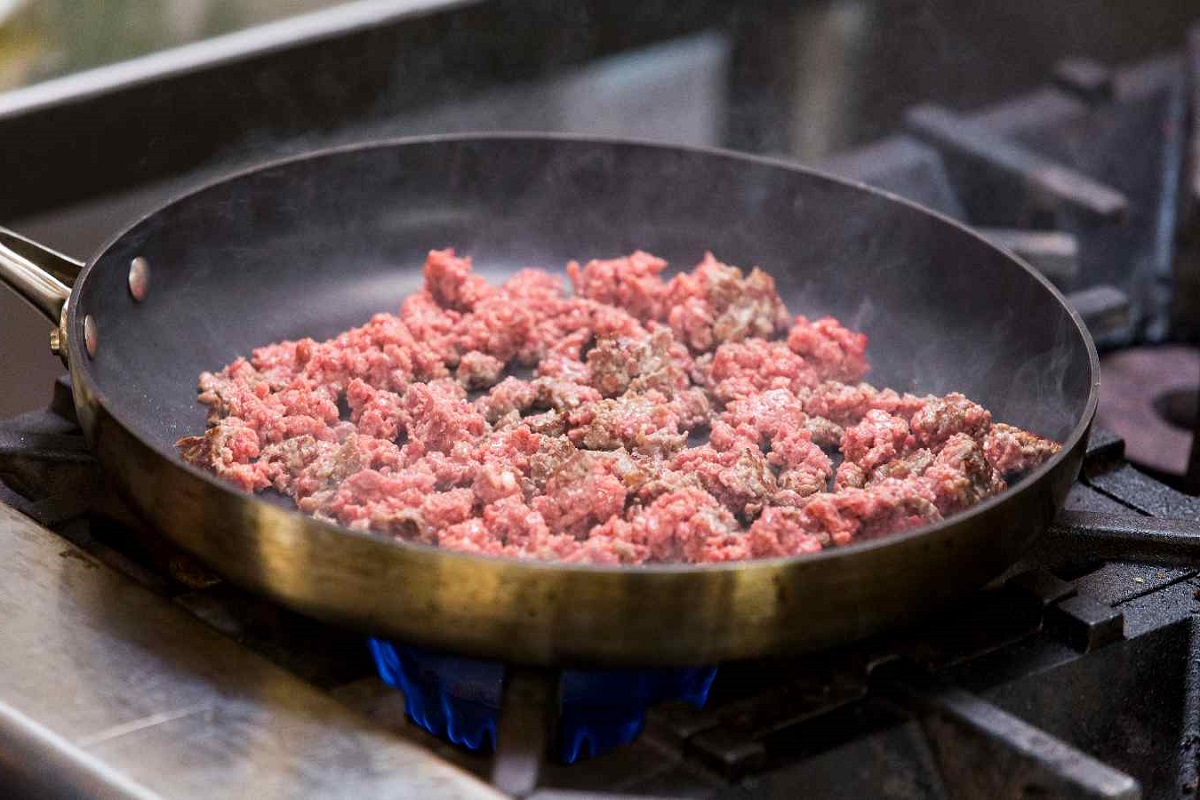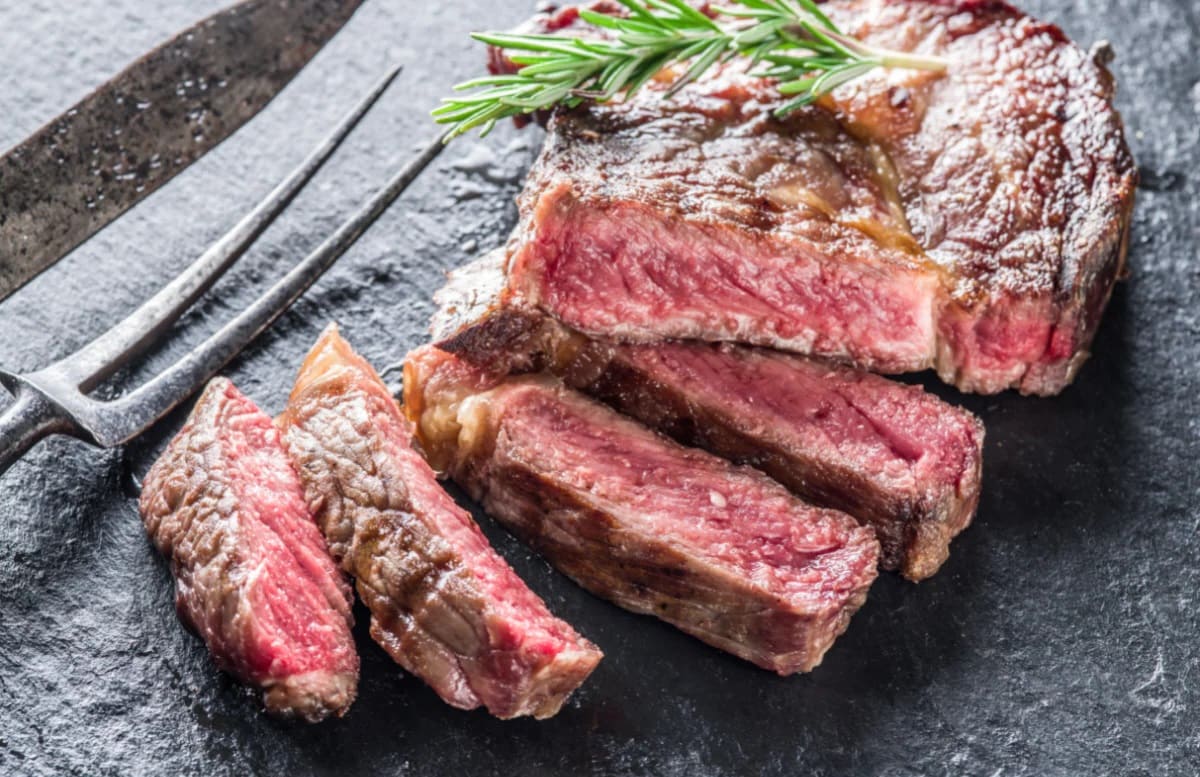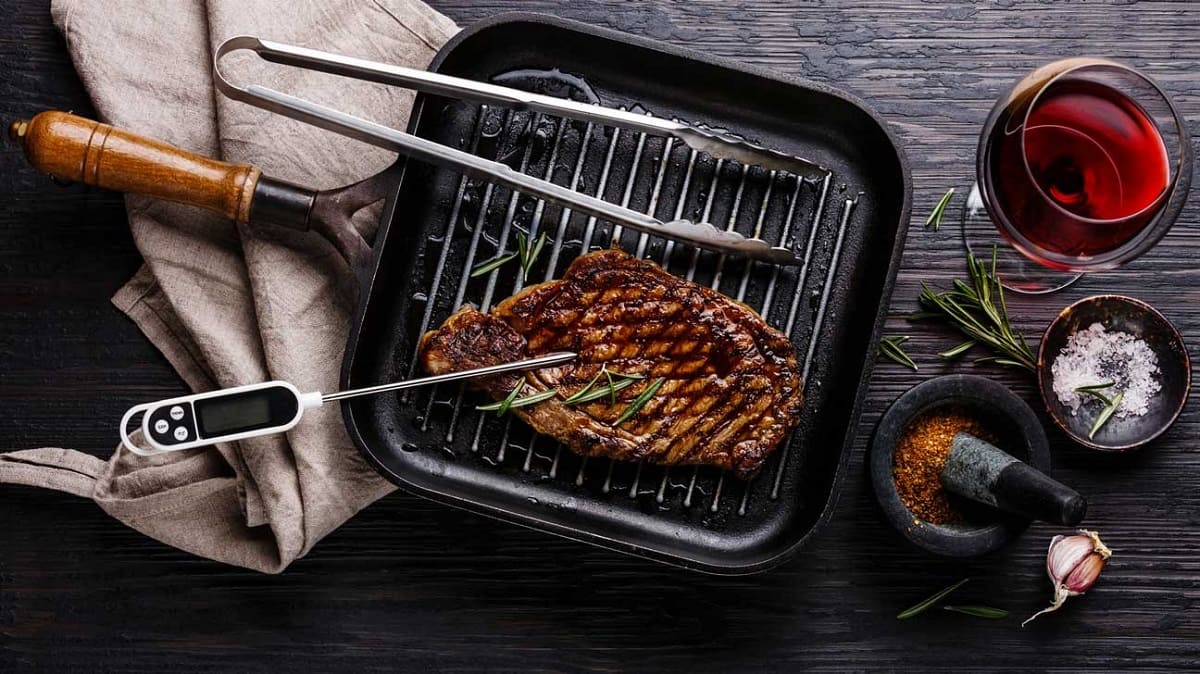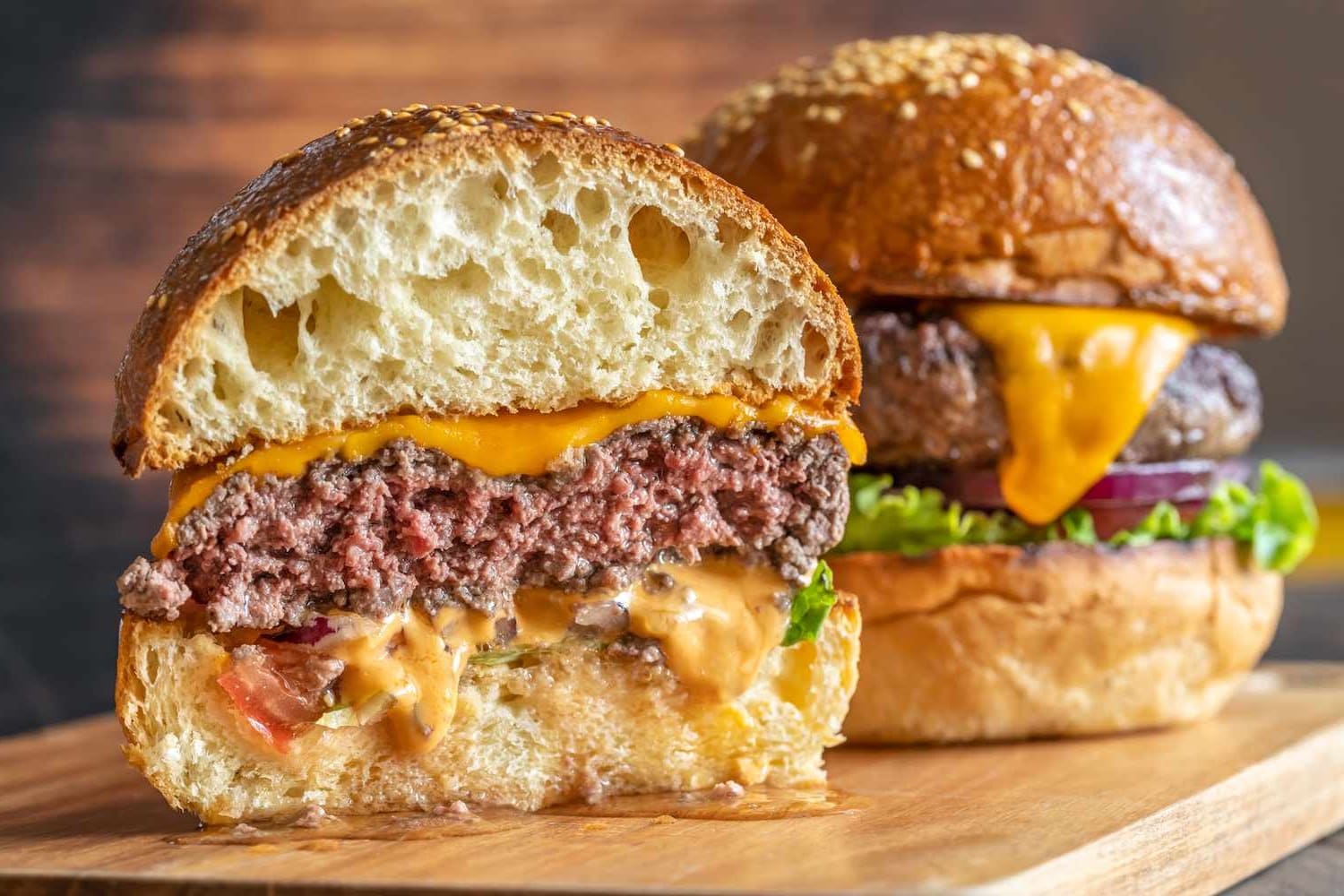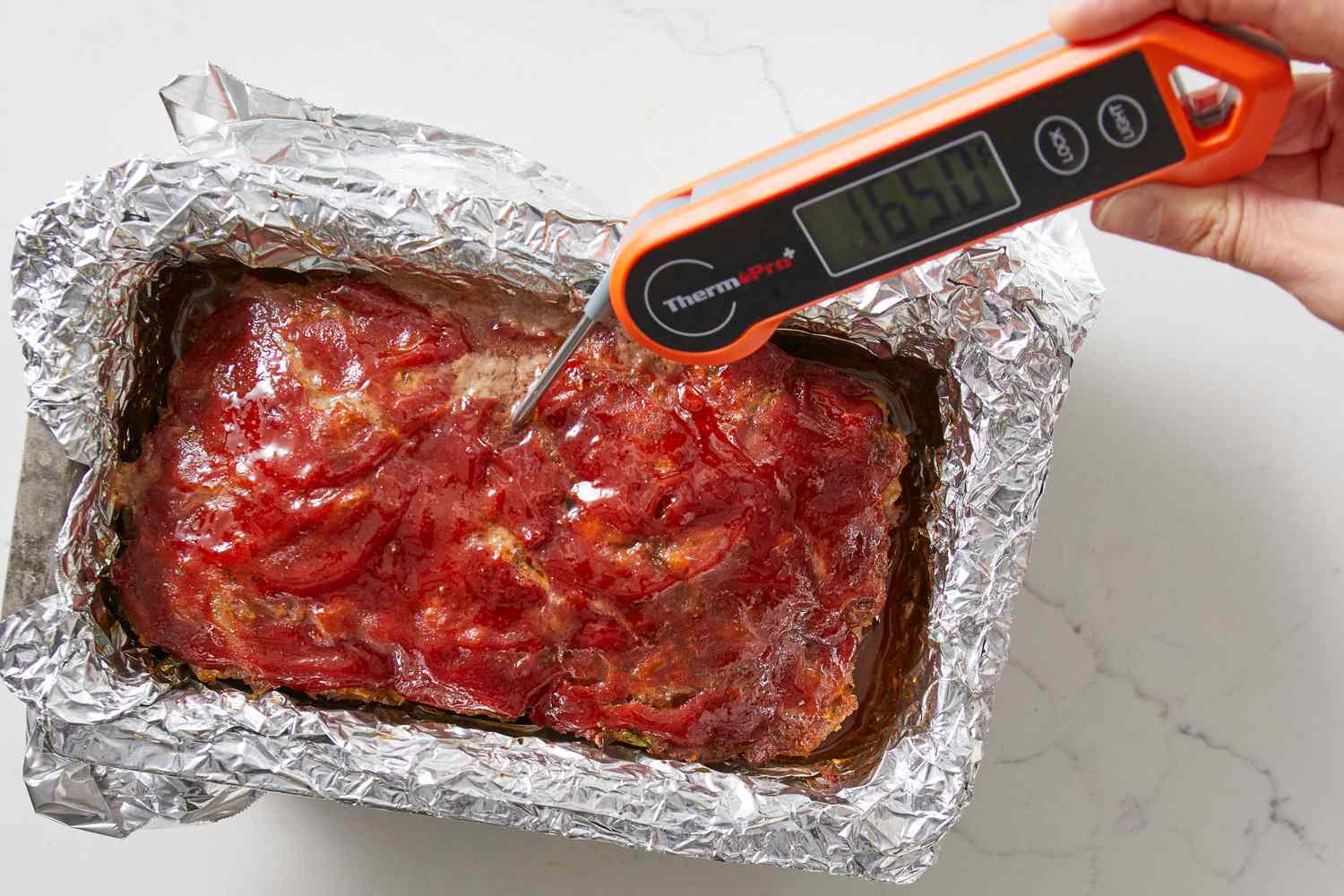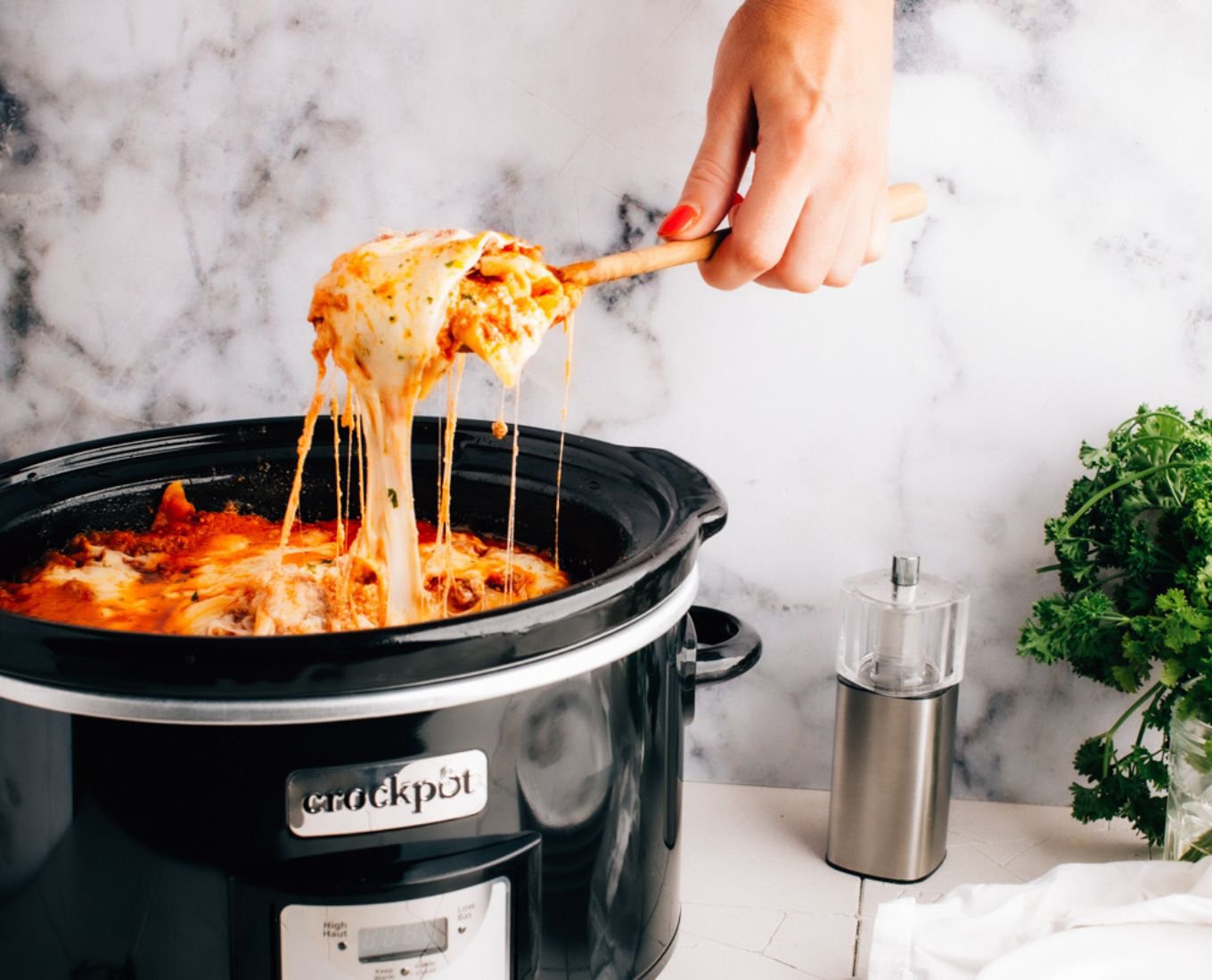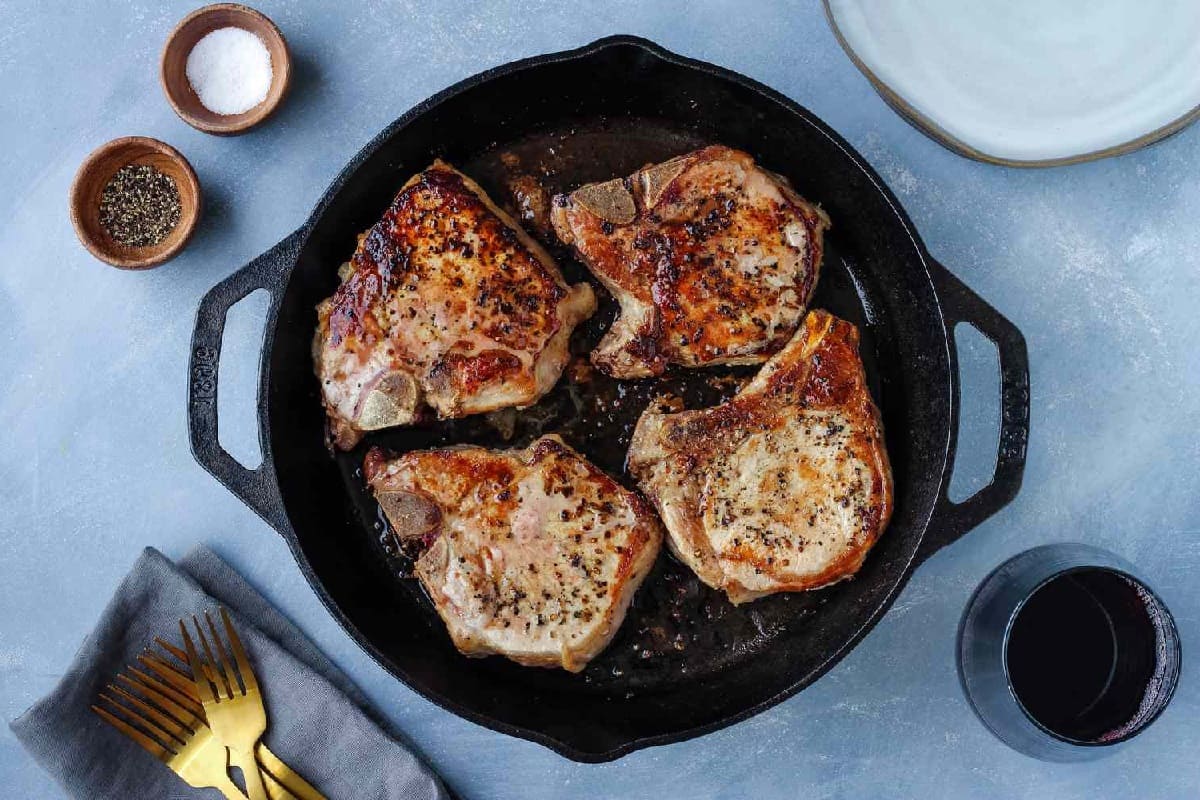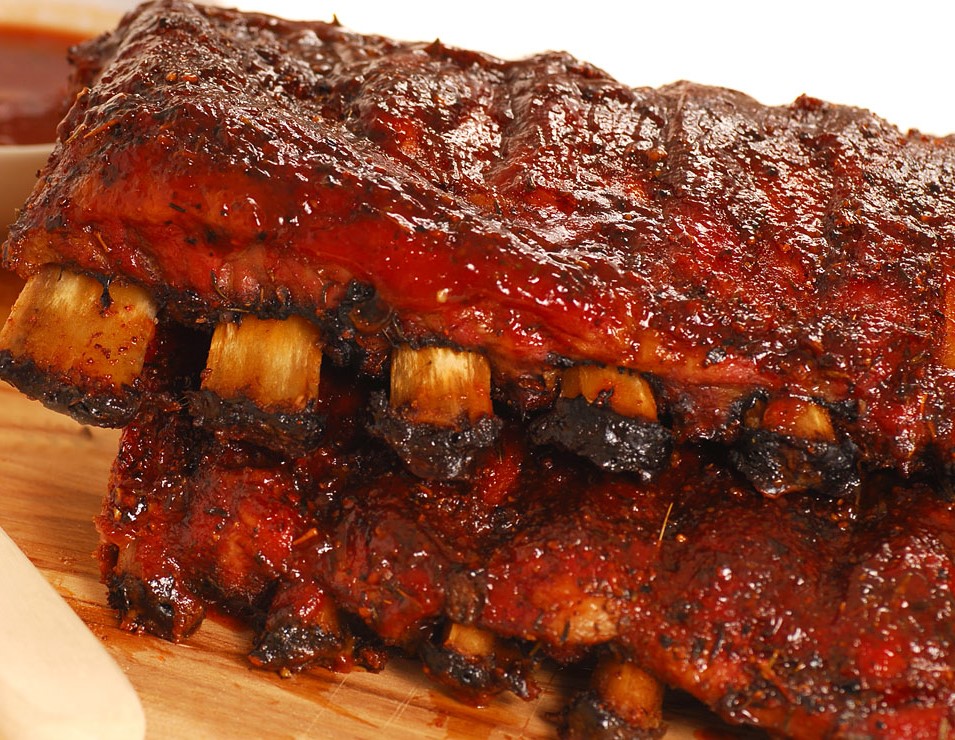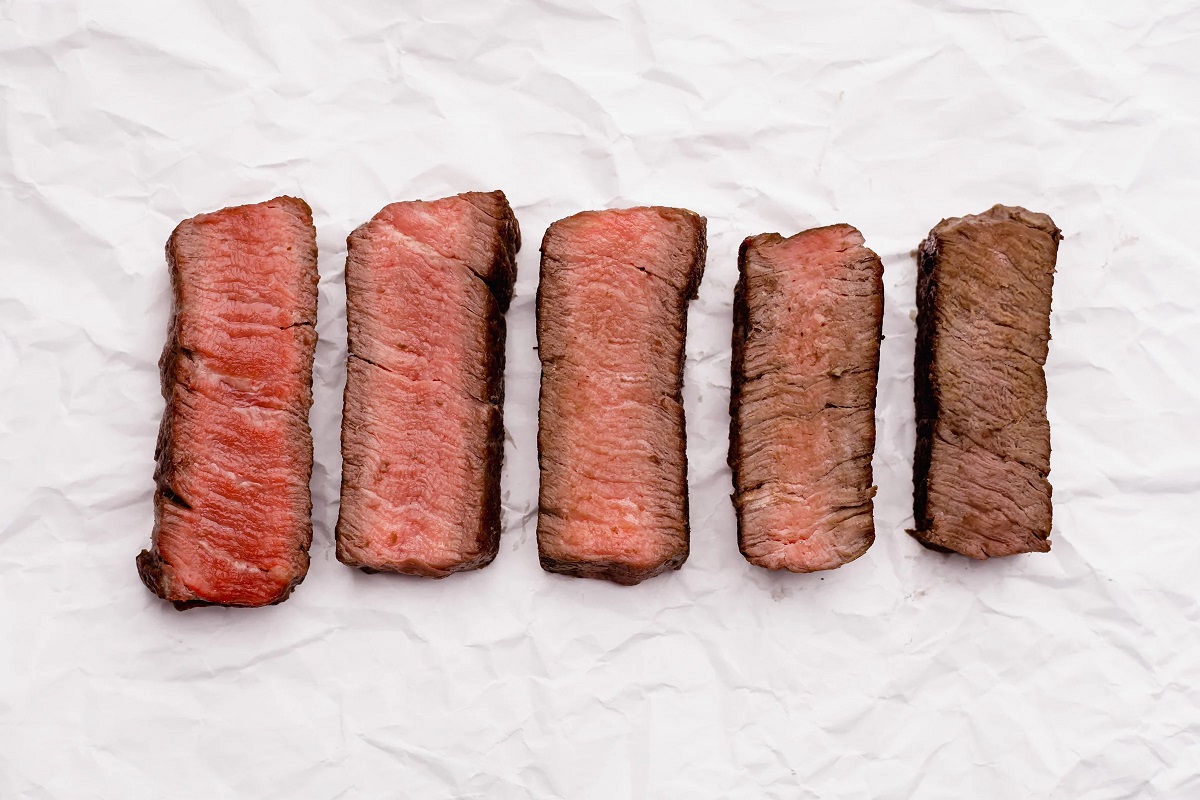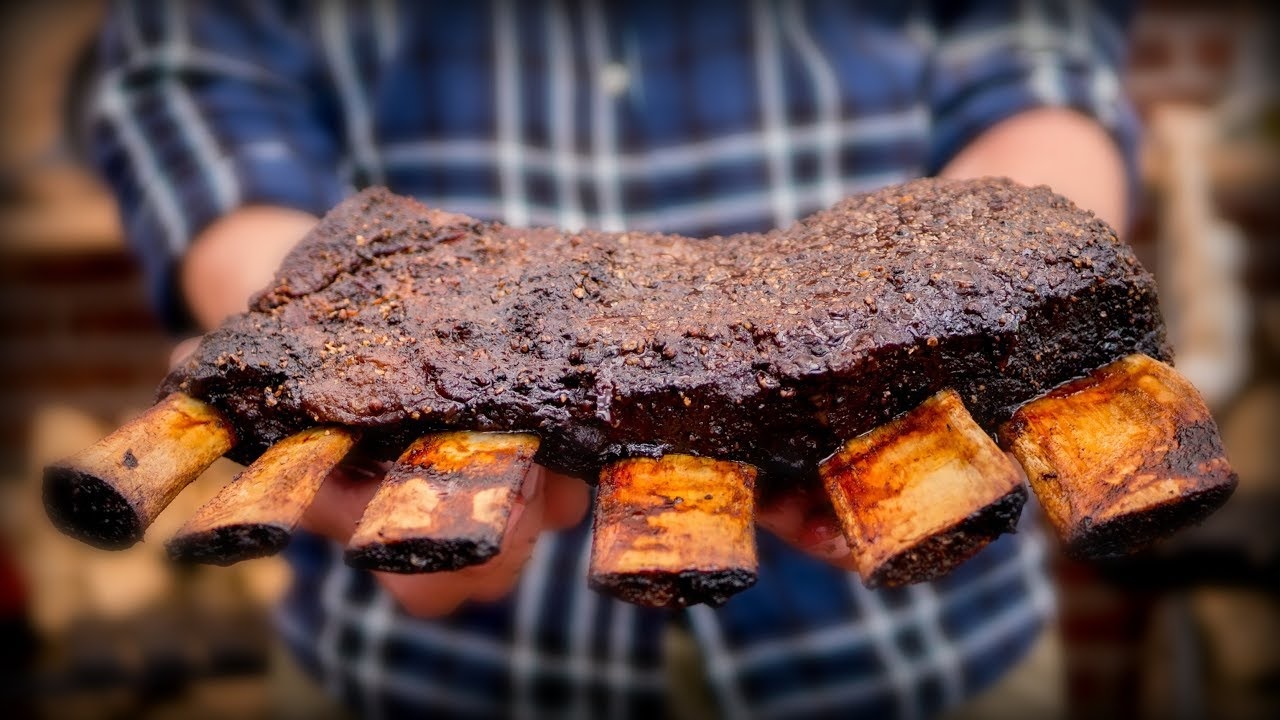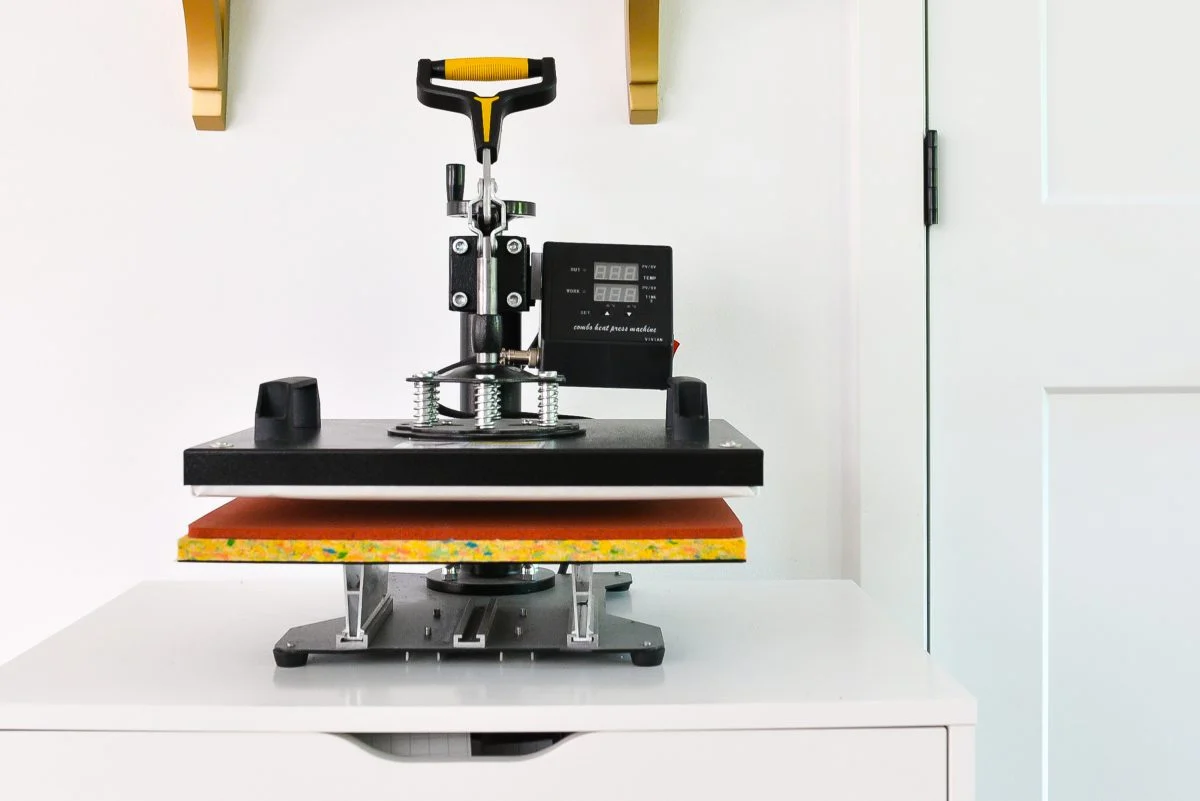Home>Culinary & Beverages>Optimal Stove Top Temperature: How To Achieve Perfect Cooking Results
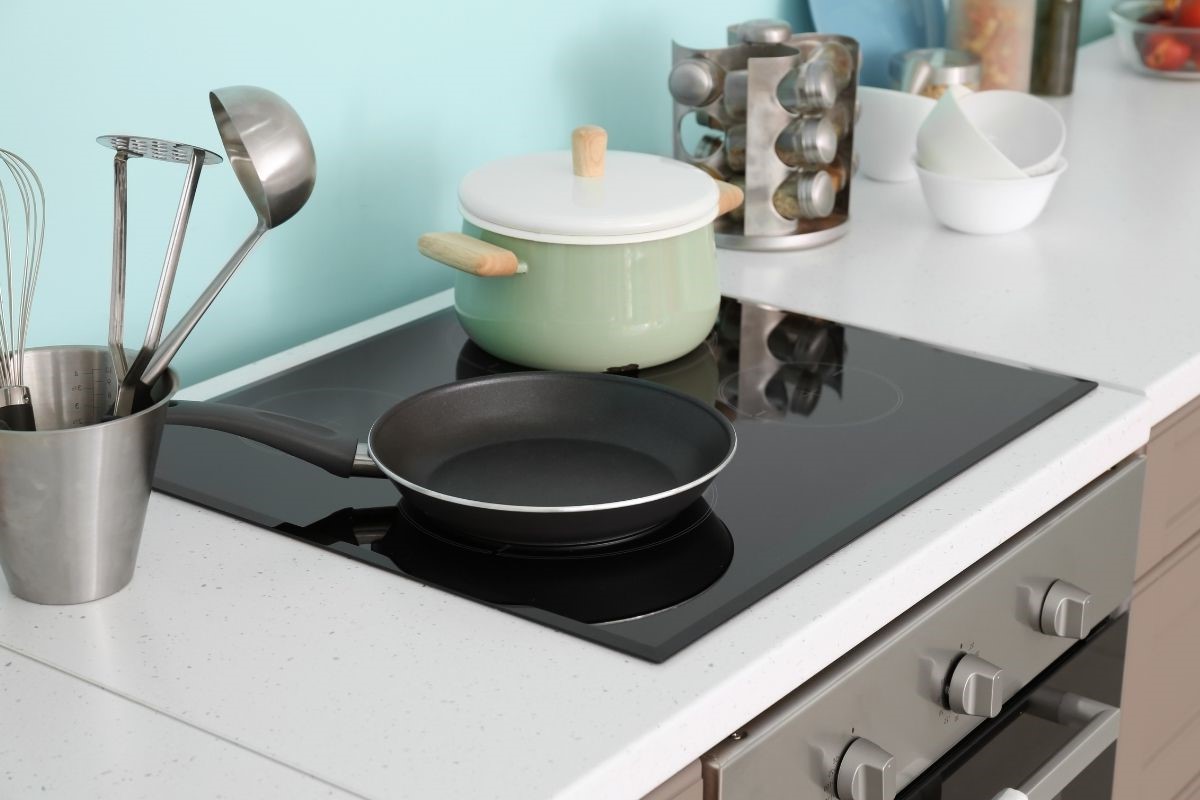

Culinary & Beverages
Optimal Stove Top Temperature: How To Achieve Perfect Cooking Results
Published: March 2, 2024
Achieve perfect cooking results with optimal stove top temperature. Expert tips for culinary & beverages. Master the art of cooking with precision.
(Many of the links in this article redirect to a specific reviewed product. Your purchase of these products through affiliate links helps to generate commission for Temperatures.com, at no extra cost. Learn more)
Table of Contents
The Importance of Stove Top Temperature in Cooking
The stove top temperature plays a pivotal role in the outcome of your culinary creations. Whether you're searing a steak, sautéing vegetables, or simmering a delicate sauce, the temperature at which you cook directly impacts the flavor, texture, and overall success of your dish. Understanding the significance of stove top temperature empowers you to elevate your cooking skills and achieve consistently delicious results.
Precision in Cooking
Maintaining the right stove top temperature is crucial for achieving precision in cooking. Different ingredients and recipes require specific heat levels to bring out their best flavors and textures. For instance, searing a steak at high heat creates a delectable crust while keeping the interior juicy, while delicate sauces necessitate gentle, low-heat simmering to prevent curdling or scorching. By mastering the art of controlling stove top temperature, you can unleash the full potential of each ingredient and dish.
Flavor Development
Stove top temperature directly influences flavor development in cooking. When ingredients are subjected to the appropriate heat, their natural sugars caramelize, proteins brown, and fats render, resulting in complex and rich flavors. Conversely, incorrect temperature can lead to undercooked, overcooked, or unevenly cooked dishes, compromising their taste and appeal. By understanding the optimal stove top temperature for different cooking techniques, you can enhance the flavors of your dishes and create memorable dining experiences.
Texture and Moisture Retention
The right stove top temperature is essential for achieving the desired texture and moisture retention in your dishes. Whether you're aiming for a crispy exterior on a piece of fish or tender-crisp vegetables in a stir-fry, controlling the heat level is key. Additionally, maintaining the ideal temperature during the cooking process prevents the loss of moisture, ensuring that meats remain succulent and vegetables retain their vibrant colors and crispness.
Overall Cooking Efficiency
Efficient use of stove top temperature not only impacts the quality of your dishes but also contributes to overall cooking efficiency. By utilizing the appropriate heat levels, you can reduce cooking times, conserve energy, and minimize the risk of burning or overcooking. This not only saves time and resources but also allows you to produce consistently delectable meals with ease.
Understanding the importance of stove top temperature in cooking is fundamental to honing your culinary skills and creating exceptional dishes. By mastering temperature control, you can unlock the full potential of your ingredients and elevate your cooking to new heights.
Factors Affecting Stove Top Temperature
The stove top temperature is influenced by various factors that can significantly impact the cooking process and the final outcome of your dishes. Understanding these factors is essential for achieving precise control over the heat and ensuring consistent cooking results.
1. Cookware Material and Thickness
The type and thickness of the cookware used on the stove directly affect the distribution and retention of heat. Materials such as copper and aluminum conduct heat efficiently, while cast iron and stainless steel have slower heat conductivity. Thicker cookware tends to retain heat for a longer duration, while thinner pans respond more quickly to changes in temperature. Choosing the appropriate cookware for specific cooking tasks is crucial for achieving the desired stove top temperature.
2. Stove Type and Burner Size
The type of stove, whether gas, electric, or induction, and the size of the burner play a significant role in determining the stove top temperature. Gas stoves offer immediate and precise heat control, while electric stoves may have a delayed response to temperature adjustments. Additionally, the size of the burner relative to the size of the cookware affects how evenly the heat is distributed. Using the right burner size for the selected cookware is essential for maintaining the desired temperature.
3. Ambient Temperature and Humidity
The ambient temperature and humidity in the kitchen environment can impact the stove top temperature. In warmer and more humid conditions, the stove may require adjustments to achieve the intended heat level. Additionally, factors such as drafts and ventilation can affect the stability of the stove top temperature, necessitating vigilance and potential adjustments during the cooking process.
4. Altitude
Altitude plays a role in the boiling point of water, which in turn affects the stove top temperature. At higher altitudes, where the atmospheric pressure is lower, water boils at a lower temperature. This can influence the cooking time and required stove top temperature for various recipes, especially those involving boiling or simmering.
5. Heat Source Stability
The stability and consistency of the heat source, whether gas flame or electric element, directly impact the stove top temperature. Uneven flames or inconsistent electric heating elements can lead to hot spots or uneven cooking. Ensuring the stability and reliability of the heat source is essential for maintaining the desired temperature throughout the cooking process.
By considering these factors and their impact on stove top temperature, you can make informed decisions and adjustments to achieve optimal cooking conditions for a wide range of recipes and culinary techniques. Mastering the art of controlling these variables empowers you to harness the full potential of your stove and cookware, resulting in consistently exceptional culinary creations.
Tips for Achieving the Optimal Stove Top Temperature
-
Preheat and Maintain: Before starting any cooking process, preheat the pan or pot over medium heat for a few minutes. This ensures even distribution of heat and sets the stage for achieving the desired stove top temperature. Once the preheating is complete, adjust the heat as needed to maintain the optimal temperature throughout the cooking process.
-
Invest in Quality Cookware: High-quality cookware with good heat conductivity and thickness facilitates better temperature control. Consider investing in cookware made of materials such as copper, aluminum, or clad stainless steel, as they respond well to temperature adjustments and distribute heat evenly.
-
Use the Right Burner Size: Match the size of the burner to the size of the cookware. Using a burner that is too small or too large for the pan or pot can lead to uneven heating and make it challenging to achieve the optimal stove top temperature.
-
Learn Heat Adjustment Techniques: Familiarize yourself with the heat adjustment capabilities of your stove. For gas stoves, small adjustments to the flame can make a significant difference in temperature. Electric stoves may have a lag in response time, so anticipate the need for adjustments and plan accordingly.
-
Utilize Simmering and Boiling Techniques: For recipes that require simmering or boiling, aim to maintain a gentle and consistent heat level. Adjust the stove top temperature to keep the liquid at a steady simmer or rolling boil, as specified in the recipe, to achieve the desired results.
-
Monitor and Adjust as Needed: Regularly monitor the stove top temperature throughout the cooking process. If the temperature deviates from the desired range, make timely adjustments to ensure that the heat level aligns with the requirements of the recipe.
-
Consider Ambient Conditions: Take into account the ambient temperature and humidity in the kitchen. In warmer environments, slightly lower the stove top temperature to compensate for the external heat. Similarly, in colder conditions, a slightly higher temperature may be necessary to achieve the intended cooking results.
-
Practice and Patience: Achieving the optimal stove top temperature is a skill that improves with practice and patience. Experiment with different heat levels and observe how they affect the cooking process and final dishes. Over time, you'll develop an intuitive sense of temperature control.
By implementing these tips, you can enhance your ability to achieve and maintain the optimal stove top temperature for a wide range of recipes and cooking techniques. Mastering temperature control is a fundamental aspect of culinary expertise, and these strategies will empower you to elevate your cooking skills and create exceptional dishes with precision and consistency.
Common Cooking Mistakes Related to Stove Top Temperature
-
Failure to Preheat: Neglecting to preheat the pan or pot before adding ingredients is a common mistake that can lead to uneven cooking. Preheating allows the cookware to reach the desired temperature, ensuring that ingredients cook consistently and develop flavors evenly.
-
Inadequate Heat Adjustment: Incorrectly adjusting the stove top temperature during the cooking process can result in undercooked or overcooked dishes. Failing to lower the heat when a recipe calls for simmering or neglecting to increase the temperature for proper searing can compromise the final outcome.
-
Mismatched Burner Size: Using a burner that is either too small or too large in relation to the cookware can lead to inefficient heat distribution. This mismatch can cause uneven cooking, with certain areas of the pan receiving more heat than others, resulting in inconsistent results.
-
Rapid Temperature Changes: Rapidly increasing or decreasing the stove top temperature can shock the ingredients and lead to undesirable outcomes. Sudden temperature changes can cause proteins to seize, sauces to break, and delicate foods to overcook or burn.
-
Ignoring Ambient Conditions: Failing to account for the ambient temperature and humidity in the kitchen can lead to challenges in achieving the intended stove top temperature. In warmer environments, the stove may require lower settings, while in colder conditions, higher temperatures may be necessary.
-
Overcrowding the Pan: Overcrowding the pan with ingredients can cause the stove top temperature to drop significantly, impeding the proper searing or browning of the food. This mistake often leads to steaming rather than searing, resulting in a lack of desirable texture and flavor development.
-
Inconsistent Heat Source: Inconsistent heat distribution from the stove, whether due to uneven gas flames or malfunctioning electric elements, can lead to uneven cooking. Hot spots and cold zones in the cookware can result in dishes that are unevenly cooked or scorched in certain areas.
-
Lack of Monitoring and Adjustment: Failing to monitor the stove top temperature throughout the cooking process can lead to missed opportunities for timely adjustments. Without vigilant monitoring, the temperature may deviate from the optimal range, affecting the quality of the final dish.
By recognizing these common cooking mistakes related to stove top temperature and taking proactive measures to avoid them, you can elevate your culinary skills and achieve consistent cooking results. Awareness of these pitfalls empowers you to make informed decisions and adjustments, leading to exceptional dishes that showcase precision and mastery in temperature control.
Adjusting Stove Top Temperature for Different Cooking Methods
Adapting the stove top temperature to suit various cooking methods is essential for achieving optimal results in the kitchen. Different culinary techniques, such as searing, sautéing, simmering, and frying, require specific heat levels to bring out the best in each dish. Understanding how to adjust the stove top temperature for different cooking methods empowers cooks to master a diverse range of recipes and elevate their culinary prowess.
Searing and High-Heat Cooking
When it comes to searing meats or achieving a caramelized crust on certain ingredients, high heat is paramount. For this cooking method, preheat the pan over high heat to ensure a sizzling hot surface. This initial burst of high heat is crucial for creating the desirable Maillard reaction, which imparts rich flavors and appealing textures to the food. Adjust the stove top temperature as needed to maintain the high heat throughout the searing process, ensuring that the exterior of the ingredients achieves the desired color and flavor while retaining succulence.
Sautéing and Stir-Frying
Sautéing and stir-frying involve cooking ingredients quickly in a pan over medium to high heat. The key is to keep the ingredients in constant motion while ensuring that the stove top temperature remains sufficiently high to achieve rapid cooking without burning. Adjust the heat to maintain a consistent sizzle, allowing the ingredients to cook evenly and develop enticing flavors while retaining their natural textures.
Simmering and Low-Heat Cooking
For recipes that call for simmering, such as soups, stews, and braises, it's essential to adjust the stove top temperature to maintain a gentle and steady simmer. Lower the heat to a level where small bubbles gently break the surface of the liquid without reaching a rolling boil. This gentle simmer allows flavors to meld and ingredients to tenderize slowly, resulting in rich and harmonious dishes.
Frying and Deep-Frying
When frying or deep-frying, achieving and maintaining the right stove top temperature is crucial for achieving crispy and golden results. For shallow frying, such as pan-frying, the temperature should be moderate to high, allowing the ingredients to cook through while developing a crisp exterior. Deep-frying requires a higher temperature to ensure rapid and uniform cooking, resulting in perfectly fried foods with a delightful crunch.
Adjusting for Baking and Roasting
Even though baking and roasting primarily take place in the oven, the stove top temperature plays a role in certain preparations, such as preheating pans for bread or pizza dough. Additionally, when searing meats before roasting, it's essential to adjust the stove top temperature to achieve a perfect sear without overcooking the interior.
By mastering the art of adjusting the stove top temperature for different cooking methods, cooks can confidently tackle a wide array of recipes with precision and finesse. This understanding empowers them to harness the full potential of their ingredients and create exceptional dishes that delight the palate and elevate the dining experience.
